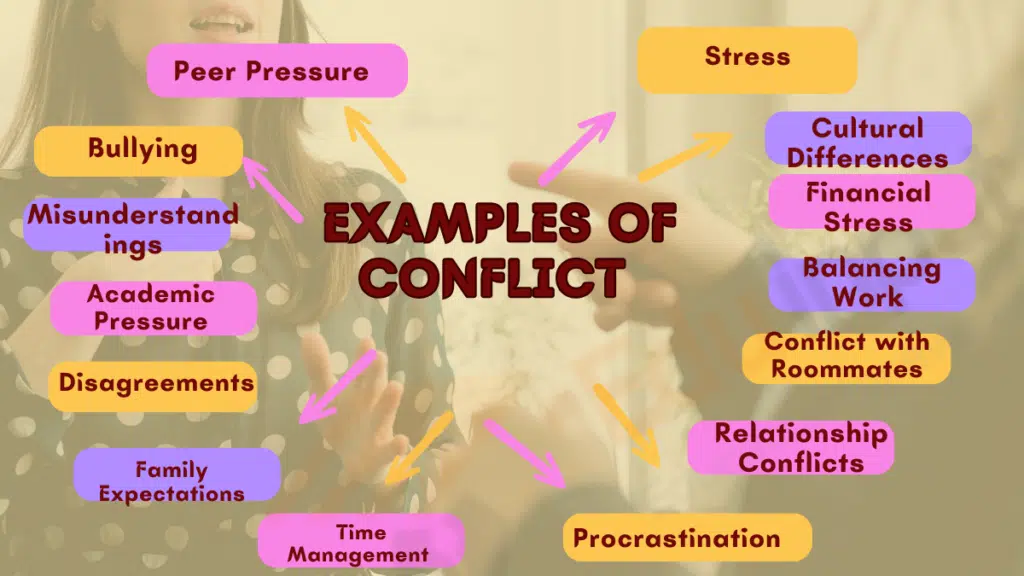15 Examples of Conflict in Students
Conflict is a part of life, and students are no exception. Whether it’s with classmates, teachers, or even themselves, students encounter various conflicts during their academic journey.
In this blog post, we’ll explore 15 straightforward examples of conflict that students commonly face and provide some tips on how to address them.

Examples of Conflict
1: Peer Pressure
Students may feel pressured to conform to the behaviors and choices of their peers, leading to conflicts between personal values and social expectations.
2: Bullying
Being a victim of bullying can cause significant emotional conflicts for students. It’s essential to report such incidents to the school authorities.
3: Academic Pressure
The stress of exams and assignments can lead to internal conflicts and anxiety. Time management and seeking help when needed can alleviate this.
4: Teacher-Student Misunderstandings
Sometimes, students and teachers may misunderstand each other, leading to communication conflicts. Open and respectful communication can resolve these issues.
5: Group Project Disagreements
Conflicts can arise within student groups when working on projects. Setting clear expectations and roles can help prevent these conflicts.
6: Family Expectations
Students may struggle to meet their family’s expectations, leading to inner conflicts. Open discussions about goals and aspirations can help.
7: Time Management Issues
Balancing school, extracurricular activities, and personal life can create time management conflicts. Developing a schedule and prioritizing tasks can be beneficial.
8: Stress from Social Media
Cyberbullying and comparison on social media platforms can create emotional conflicts. Encouraging healthy digital habits and seeking support is essential.
9: Conflict with Roommates
College students living together may face conflicts over shared spaces and responsibilities. Establishing ground rules can help maintain harmony.
10: Cultural Differences
International students might experience conflicts related to cultural adjustments. Embracing diversity and seeking cultural awareness can ease these tensions.
11: Financial Stress
Managing expenses, student loans, and part-time jobs can lead to conflicts related to finances. Budgeting and seeking financial advice can provide solutions.
12: Balancing Work and Study
Students who work part-time jobs may struggle to balance work and academics. Prioritizing tasks and time management can reduce conflicts.
13: Extracurricular Overload
Joining too many clubs or activities can lead to conflicts related to time and energy. Learning to say no and focusing on quality over quantity can help.
14: Relationship Conflicts
Romantic relationships can sometimes cause emotional turmoil, affecting academic performance. Open communication with partners and friends can be a remedy.
15: Procrastination
Students may face internal conflicts due to procrastination. Developing self-discipline and time management skills can combat this common issue.
Students face a myriad of conflicts during their educational journey, but with effective communication, time management, and support systems in place, many of these conflicts can be resolved or prevented.
Encouraging students to seek help when needed and promoting healthy habits can lead to a more fulfilling and successful academic experience.



Leave a Reply